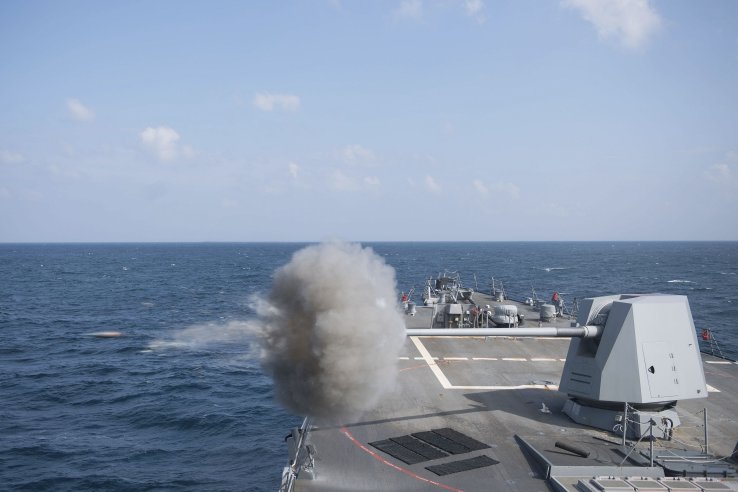
US Naval Sea Systems Command (NAVSEA) has released an initial Request for Information (RFI) to assess potential seeker options for the US Navy’s (USN’s) next-generation Gun-Launched, Guided Projectiles (GLGP), which are planned to be fired from the MK 45 5-inch guns that equip the service’s cruiser and destroyer fleet.
The RFI was released on 29 January and states that the USN is interested in a “variety of seeker solutions”, particularly radio frequency (RF) and passive optic seeker types for terminal guidance. “These two seeker families have been emphasised because they minimise platform modifications while providing system capability against raids and enabling over-the-horizon terminal operation,” the RFI stated.

The USN Arleigh-Burke class guided-missile destroyer USS Jason Dunham (DDG 109) fires its MK 45 5-inch gun during a gunnery exercise in the Gulf of Aden in 2018. (US Navy)
Mid-course guidance could be provided by the AN/SPY-1/6 air- and missile-defence radar along with a “platform-to-projectile” two-way datalink. This mid-course guidance could be used to reduce field-of-view (FOV) requirements, with the navy noting that it is interested in gimbaled and body-fixed seekers. A gimbaled seeker could add cost and complexity but would reduce FOV requirement “significantly” compared with body-fixed examples.
The GLGP will have “significant volumetric limitations”, according to the RFI, with the seeker size ultimately affecting warhead size. “The available volume of a high-velocity guided projectile is very limited, which emphasises the importance of high-energy density power sources,” it said.
Looking to read the full article?
Gain unlimited access to Janes news and more...




